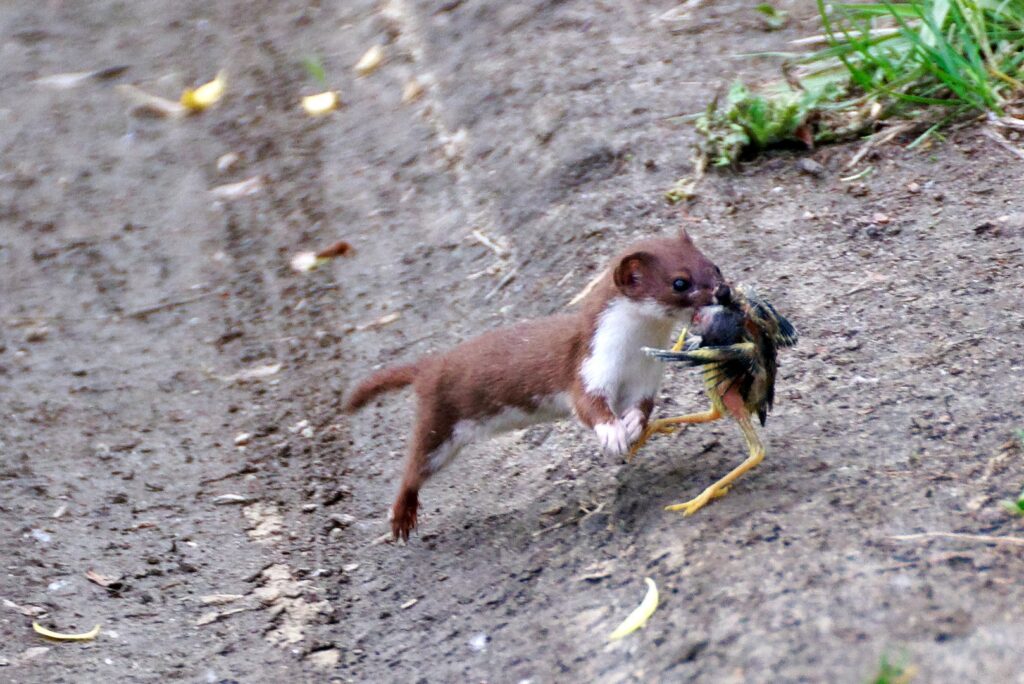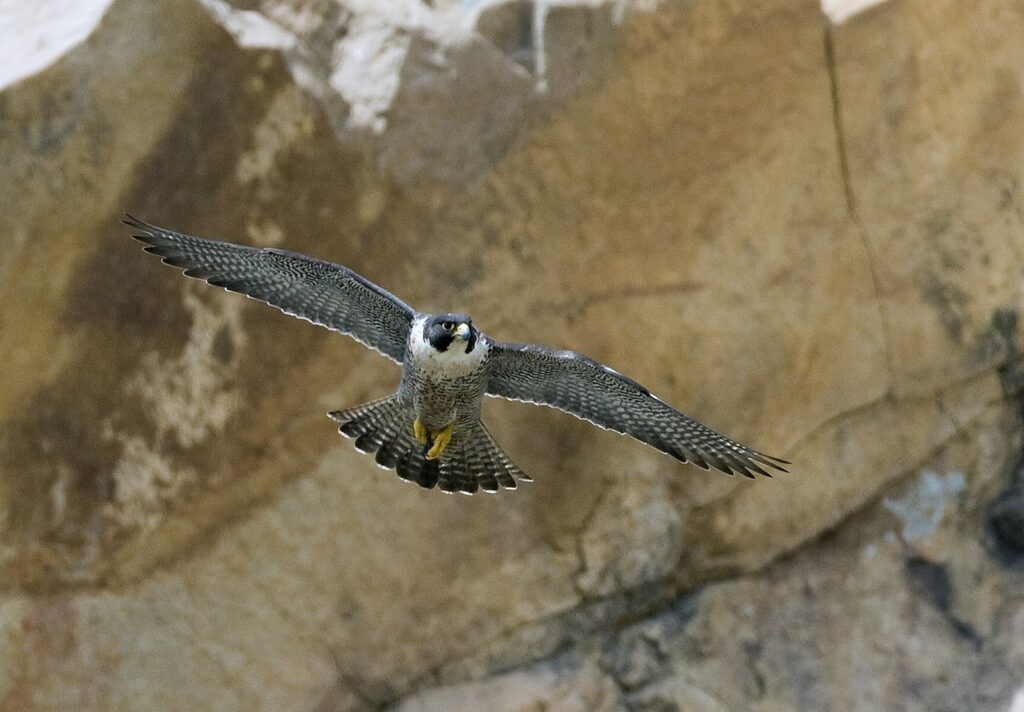Fast and efficient hunters
Predators come in a variety of forms on Earth and they hunt their prey using many different techniques. Some predators ambush and attack suddenly, while others are active hunters, relying on speed. Evolution has created different adaptations for active hunters. They often have well-developed eyesight, and can run, swim, fly or jump very quickly. Their bodies may be slender, or streamlined to move quickly through water. On land, mammals may have long legs and very slender bodies, with powerful hind leg muscles. And in the air, birds have evolved the ability to dive in search of food.
The cheetah is the fastest land-living animal on Earth. When hunting, it can reach speeds up to 120 km/h, that is, as fast as the highest speed allowed on Swedish freeways.
Photo: Malene-Thyssen-CC-BY-SA
Swifts are birds that live almost all their lives in the air. They hunt for insects, and thanks to their body shape - they can reach a flight speed higher than 100 km/h.
Photo: AlexeySokolov1971-CC-BY-SA
The spotted green snake's slender body and large eyes, tell about its active hunting style.
Photo: Johanna-Rylander-Malmö-Museer
The king cobra is long and slender, but the world's largest venomous snake. It is an active hunter.
Photo: Michael-Allen-Smith-CC-BY-SA
Swift snakes and attacking spiders
The energetic spotted green snake is active during the day, threadlike and swift. It moves nimbly among branches and twigs, in search of lizards and frogs. Several species of venomous snakes in Africa and Asia are called cobras. They have the ability to raise their forebody and spread their front ribs so that their skin is stretched to form a shield. When they catch their prey, they can pounce on it with lightning speed.
Jumping spiders are one of the world’s most diverse families of spiders. They don’t build webs to catch their prey, but instead leap at it in a flash. When a jumping spider moves from one place to another, it shoots its own web towards the place it is jumping from. If the spider then fails to land at the spot it is jumping towards, it can use the web to haul itself back.
Jumping spiders has the best vision of all spiders - a great trait in an active hunter.
Photo: Swaroopsingharoy-CC-BY-SA
The barracuda is slender and streamlined. It can hunt in groups, and swims quickly.
Photo: edmands-CC-BY
The orca is an active hunter, which often combines speed and hunting in groups, in order to best capture its prey.
Fast hunters in water
The barracuda is a large predatory fish, with large sharp teeth in two rows. The barracuda finds its prey by sight, and eats fish of many different species. The species can reach speeds of up to 35 km/h. Once it has selected its prey, it darts like a torpedo through the water after it.
The orca is a mammal that lives in water. It has the ability to swim up to 56 km/h in pursuit of prey. It eats everything from fish and birds to other marine mammals such as seals and sea lions. Orcas are highly intelligent, and can choose to hunt both alone and in groups. They use echolocation to find prey.

Photo: Jakub-Halun-CC-BY-SA
As quick as a weasel
The weasel is a small mustelid that is common in Sweden. The body of the weasel is small, coil-shaped and very flexible. The weasel seeks out small rodents and then dashes after them, snatching them at lightning speed. Like many other active hunters, the weasel has a very high metabolic rate. This means that it must eat frequently, and in large quantities relative to its body weight.

Photo: Kevin-Cole-CC-BY
Diving birds
Many species of birds of prey, such as falcons and hawks, have developed highly effective hunting techniques. They use their superb eyesight to locate prey on the ground. They then dive, with their wings folded back to reduce air resistance, and strike the prey with their talons.